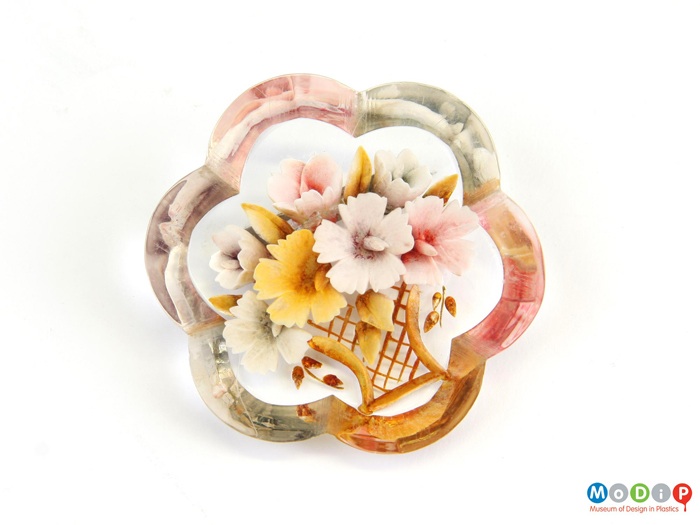Floral brooch
A pretty bunch of flowers for spring and it would be wonderful to know at least in which country such brooches were made. It is an intricate bit of work.

Case number - AIBDC : 005927
A brooch with a floral design with a scalloped edge and decorated with the image of a vase of flowers. The moulded Lucite has been carved on the reverse side and colour applied giving the impression of three dimensional flowers contained within the body of the brooch. A metal brooch pin has been stuck to the back
View more images on the MoDiP site
View more images on the MoDiP site
| Designer | Unknown - Wanted |
| Manufacturer | Unknown - Wanted |
| Country | Unknown - Wanted |
| Date | 1940-1949 (circa) |
| Dimensions | depth 6 mm, diameter 47 mm |
| Materials | plastic, Lucite - trade name, acrylic, PMMA, polymethyl methacrylate |
| Methods | carved, moulded, fabricated with adhesive, painted |
| Colours | colourless, multi-coloured |
Join the hunt at: 10mostinvolved
Facebook Feed
15/04/14
15/04/14
17/04/14
17/04/14
22/04/14
23/04/14
23/04/14
25/04/14











 #10
#10 #10;</body></html>" />
#10;</body></html>" />


Case notes
Floral Brooch: Case AIBDC : 005927
Who designed and made this brooch and where? May be you know in which country this intricate kind of work was done?
Probably made in the USA
17/04/2014
Chief Agent Holdsworth writes: I have seen a lot of this type of jewellery but have never seen a piece that was marked with a makers name or country of origin. Vintage jewellery dealers generally describe it as American, and, perhaps, the clue is in the name, as Lucite is an American trade name. I have never seen it described, using the UK trade names, as carved Acrylic or Perspex. Much of it was made in a hobby context. You could, in America in the 1950s, purchase kits to enable you to do it at home. Lauton Edwards in his book ‘Making Things of Plastic’ devotes a chapter to it. Lauton was a Shop (Craft) teacher at Park Junior High School in Knoxville Tennessee. His book contains illustrations of such jewellery made by his pupils. The carving was done using small rotary drills.
We think it's American. Can anyone provide information to the contrary?